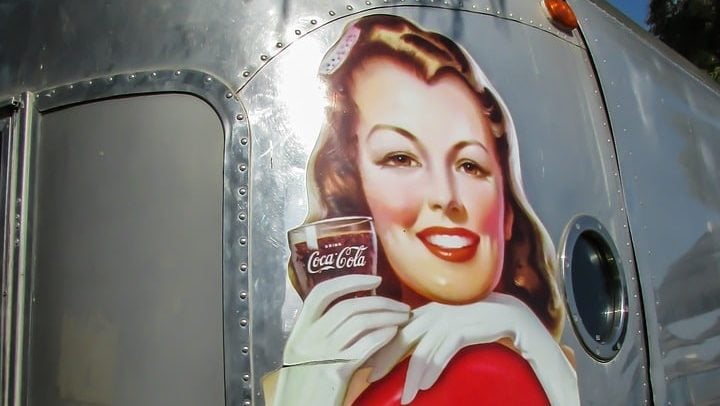We’re so used to seeing the big brands. We see their ad campaigns and outputs so often that we sometimes forget something really obvious: How did these big companies become big?
Sure, many of them had visionary leaders. Some even had massive marketing budgets. Some just had a few lucky strokes. But what about their marketing? The world’s most successful brands work hard and spend big to achieve their marketing goals.
And the fact that these companies are so enormous makes it important for them to work harder than ever at that marketing.
Obviously, no small business can copy the exact marketing moves of these brands; however, we can adopt their strategies on a smaller scale. Here are four such strategies that you can start using right away in your small business marketing plan.
Table of Contents
Toggle1. Coca-Cola has kept its brand identity and product consistent for over 130 years.
Coca-Cola is the world’s most well-known brand. Its product is in every country and on every continent and reaches millions of consumers around the clock. But this reach doesn’t come cheap: Coca-Cola spendsan estimated $4.3 billion on marketing and advertising alone. With a budget like that, you can do almost anything you want to do.
But rather than make radical moves, Coca-Cola has worked hard to stay the same. Its emblematic marketing features and products have changed very little in the company’s long history. Why does this matter?
As North Star Marketing has observed in question form:
The difference between a good brand and a great brand? Consistency.
Coca-Cola’s consistency is communicated in its iconic logo and its soft drink’s familiar taste. The company has paved the way for global domination.
Now, you may not have a single product such as Coca-Cola, but you can still practice rock-solid consistency. Many business owners are too quick to run after the shiny balls in marketing: Every so often they’ll add shiny tricks and ad hoc alterations to their marketing scheme in hopes of renewing their image and increasing their revenue.
But maybe there’s some wisdom in stability and dogged determination.
2. Apple satisfies the cravings of a passionate tribe.
Another of the world’s most famous brands is Apple. What is its marketing strategy? Apple created a movement.
This didn’t happen by accident. Everything about the company’s marketing and advertising produced visions of world-changing experiences. It adorned this vision with unprecedented technology and mind-blowing innovation.
Whether or not Apple’s products live up to the hype doesn’t really matter. What matters is that the company created the hype and turned ordinary citizens into a tribe of frenetic fans. How many times have you heard someone say, “Yeah, I’m a Microsoft fanboy,” or “I buy every new product that Microsoft produces” or “I waited in line for 12 hours to get my hands on a copy of Windows 7″?
Probably never, and it is unlikely that you ever will. But, with Apple?Definitely. Apple founded a tribe.
Can you? The answer is, “Of course!” even if your customer base isn’t as large or your product as expensive. Any brand can create raving fans through a few simple strategic mindsets:
- Create an awesome product.
- Deliver unparalleled customer experiences.
- Rinse and repeat.
Related: 4 Millennial Marketing Tips From Taylor Swift
3. Colgate publishes top-notch information on oral health for its customers’ benefit.
You’ve probably used Colgate toothpaste before. Maybe you even used it this morning!
But Colgate doesn’t merely make toothpaste. It imparts oral-care education to the masses. It has an Oral Care Center that is packed with user-friendly information, and engaging videos that provide all sorts of preventative care how-tos.
Obviously, this type of content makes complete and logical sense for a toothpaste company. But it’s interesting to discover how Colgate’s technique can be applied to small businesses.
The company is doing content marketing here, plain and simple. Instead of merely shoving its products down customers’ throats (or mouths), Colgate is giving information.
Any small business can do the same thing: Identify your target audience members. Understand their needs. Deliver the kind of content that they want. Simple.
4. Starbucks takes social media to a whole new level.
Starbucks has a lot going for it in the marketing arena.
But when it comes to social strategy, Starbucks is an absolute genius.
Some 80 percent of the Fortune 500 companies are active on Twitter and Facebook, but Starbucks takes this activity to a whole new level. Let’s take just one channel that the coffee company dominates and consider a few facts:
- Starbucks makes smart use of gifs and videos in its Twitter feed.
- Nearly every tweet has a custom image.
- Outright marketing is slim and hard to notice.
- Starbucks tweets back to its customers with emojis and full messages.
- Oh, and its response time is insane.
- Starbucks publishes custom infographics just for Twitter.
- Starbucks keeps a pulse on popular trends and tweets about them.
- Starbucks dominates the hashtag world and owns several unique ones.
Clearly, Starbucks has a killer Twitter strategy. And so can you. It’s not hard to dominate Twitter. It might be hard to gain 11.1 million followers, but you don’t need millions of followers. You just need active and outstanding engagement with your followers.
It’s a marketing strategy that works.
Conclusion
Maybe you’re not Apple. Maybe you’re not Coca-Cola. Maybe that’s okay.
Marketing power doesn’t flow from big budgets, 130-year-old brands or even Steve Jobs.
As Roger Martin explained in the Harvard Business Review:
Good marketing and good strategy are both about making choices that build and maintain a particular set of capabilities that enable the company to outperform its competitors.
In other words, successful marketing depends on successful strategizing. By observing the marketing strategies of the world’s most successful businesses, we can learn to implement their marketing moves on a smaller scale.
You can produce the same red-hot marketing sizzle by embracing the strategies of the big boys.
What Fortune 500 marketing strategies do you think would be most effective in your small business?
Source – Entrepreneur.com


